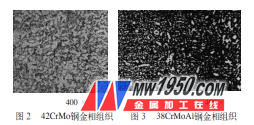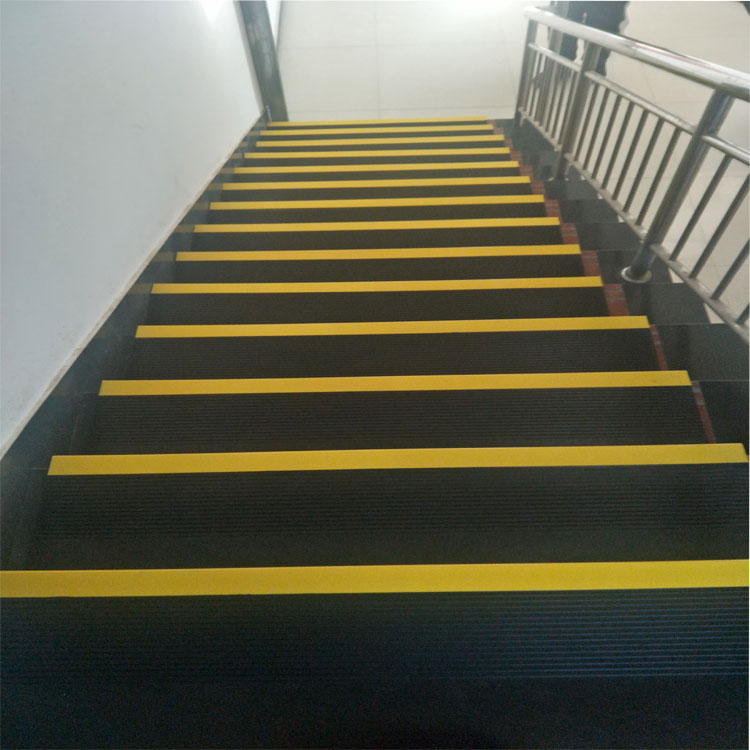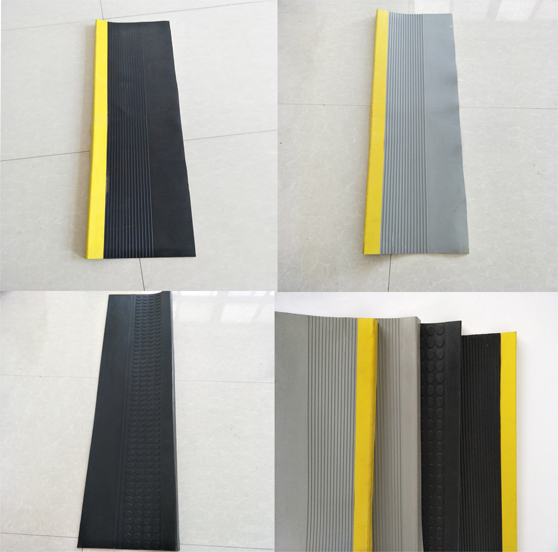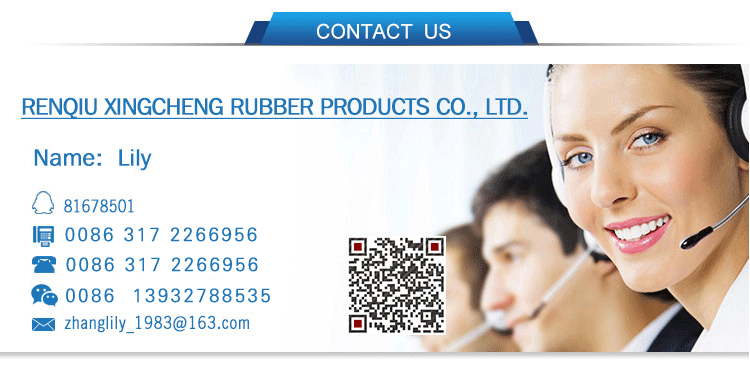The thin-walled sleeve is one of the key components of the coal mine excavator loader. It is subjected to a large impact load and friction during operation. The heat treatment quality and geometric dimensional accuracy of the thin-walled sleeve have an important influence on its service life.
Because the thin-walled sleeve is under the action of stress, the geometrical dimension is easily out of heat during the heat treatment, which increases the difficulty of heat treatment of the thin-walled sleeve. Through the analysis and test of the heat treatment process of the thin-walled sleeve, the heat treatment process plan and process parameters are reasonably formulated, thereby controlling the heat treatment deformation of the thin-walled sleeve.
First, the thin wall cover technical parameters
The thin wall sleeve of the coal mine type loader is shown in Figure 1. For different materials (see the attached table for chemical composition), the technical parameters are as follows:
(1) 42CrMo quenching treatment, surface hardness of 45 ~ 50HRC.
(2) 38CrMoAlA quenching and tempering treatment + nitriding treatment, core hardness 240 ~ 280H BW, nitride layer depth 0.2 ~ 0.4mm, surface hardness 970 ~ 1100HV.


Second, heat treatment process plan and test
1. Formulation of the process plan
(1) Pre-heat treatment The blank is prepared by quenching and tempering. The main purpose is to eliminate the forging stress, refine the grain, uniform structure, improve the cutting performance of the part, reduce the cutting stress of the part, and prepare for the next heat treatment process.
(2) Aging treatment In order to eliminate the cutting stress generated during the machining of the part, the stress relief aging treatment is added after the semi-finishing process and nitrogen gas is introduced to prevent oxidation, so as to prepare for the next heat treatment to reduce the deformation amount of the part.
(3) Heat treatment process 42C r M o The steel thin-walled sleeve is rapidly heated to 900 °C, and is heated at a high temperature and quenched at 860 °C. Reduces high temperature heating time and reduces oxidation, decarburization and deformation. The temperature of the cooling medium is ≥100 °C, and it is quenched in the cooling medium in a vertical and static manner, and tempered in time to eliminate the quenching stress.
The 38CrMoAlA steel thin-walled sleeve is nitrided by an ion nitriding furnace and uses a nitriding process to reduce part deformation.
2. Process plan test
The actual workpiece is selected according to the process plan for simulation test, and the test process is strictly controlled to ensure the quality of each process.
There are generally many metallurgical defects in the raw materials, and the formation of the defects is eliminated by repeatedly repeating the piercing and forming.
(1) Heat treatment process The quenching temperature of the hypoeutectic steel is generally (Ac3+30~70)°C, and the Acc3 temperature of 42CrMo steel is about 800 °C, so the quenching temperature is selected as 850 °C, oil cooling (oil temperature ≥ 80 ° C); tempering at 620 ° C, water cooling, metallurgical structure after quenching and tempering as shown in Figure 2.
The temperature of Ac3 of 38CrMoAlA steel is about 885 °C, so the quenching temperature is 920 °C, oil cooling (oil temperature ≥80 °C); tempering at 650 °C, water cooling, metallurgical structure after quenching and tempering is shown in Figure 3.

After the semi-finishing of the thin-walled sleeve, the aging treatment temperature is slightly lower than the quenching and tempering temperature, and 580 °C is selected, and the heating and cooling are slowly performed to avoid the stress generation principle, and the protective gas is introduced to prevent oxidation and decarburization.
The 42CrMo material thin wall sleeve adopts quenching +200 °C low temperature tempering process, and the 38CrMoAlA steel thin wall sleeve adopts ion nitriding process.
(2) Geometrical size control The external circle size of the 42CrMo steel thin-walled sleeve before quenching is controlled at φ99. 23~φ99. 25mm; the outer radius of the 38CrMoAlA steel thin-walled sleeve is controlled to be φ99.90~φ99.95mm.
Third, the process test inspection
(1) Geometric dimension variable 42CrMo steel thin-walled sleeve deformation (single-sided) ≤ 0.12mm; 38CrMoAl A steel thin-walled sleeve deformation (single-sided) ≤ 0.06mm.
(2) The hardness testing equipment is HR-150, HLN-11A, HV-150, 42CrMo steel thin wall sleeve outer circle, end face hardness is 47~49HRC; 38CrMoAlA steel thin wall sleeve nitride layer brittleness ≤2 grade, hardness is 987 ~1003HV.
(3) Metallographic examination The metallographic structure of 42CrMo steel thin-walled sleeve is needle-like tempered martensite, as shown in Fig. 4; the thin layer of 38CrMoAlA steel thin-walled casing has a small amount of vein nitride, as shown in Fig. 5.

Fourth, the conclusion
(1) For thin-walled forgings, quenching and tempering heat treatment should be used to better eliminate the stress generated by forging, and to refine the grains and improve the cutting performance.
(2) Thin wall sleeve nitriding treatment has small deformation and high surface hardness, so the high hardness thin wall sleeve heat treatment should be the nitriding treatment process.
The antislip product, beautiful, functional and environmentally friendly, which gives a full covering of the whole stair and landing area, offer extreme slip resistance due to rubber wearlayer which is chemically bonded to the top surface.
Slip stair treads and landing covers are the ultimate choice for dealing with potential slip hazard areas. Once it is installed stair safety is instantly improved.
Features of stair tread
Size of stair tread - could be design according to customer specific reqruirements, there are more chice than rubber stair treads.
Durable - Withstands the elements longer than concrete lasting at least 20+ years without replacement. Also can withstand the abuse of children, bikes, skates and weights.
Safety - Superior and resilient shock absorption characteristics. Non-slip surface provides a safe application for children to play on. No more slivers in your feet. The decorative rubber surface provide years of relaxation.
Fade Resistant - The tiles are manufactured using UV stable ingredients; therefore minimal fading will occur over extended periods of time.
Attractive - Most tiles and pavers come in six different colours and up to three surface treatments.
Maintenance Free - Once secured, our product provides a wear resistant seal, which is easy to clean and disinfect. No more staining, painting or replacing broken deck boards
Versatile - Ideal for use as a patio or deck covering, on walkways or entryways. Other common applications include driveways, play areas and as a wheelchair accessible floor system.


Company in Formations:
RenqiuXingcheng Rubber Products Co., Ltd. is located in the side of the Baiyang lake, our company is professional manufacturer of rubber products. We are one of the leading rubber company in china,The company is a private enterprise which is engaged in scientific research, production, sales and service and has obtained ISO 9001 certification. Our main business is producing all kinds of rubber products, including anti-skid plates, Rubber Sheet Series, Rubber Mat Series and horse mat series ect., The products are shockproof, anti-wear, anti-high and low temperature, anti-aging, oil resistant and chemical resistant in character.At present, our products have been sold at home and abroad and mainly exported to Canada, Germany, Chile, etc. We welcome domestic and foreign merchants to negotiate and cooperate with us. We are willing to join hands with old and new friends in creating a better tomorrow.

Rubber Stair Treads,Stair Nose Treads,Round Nose Stair Tread,Rubber Strip Stair Treads
Renqiu Xingcheng Rubber Products Co., Ltd. , http://www.xingchengrubber.com